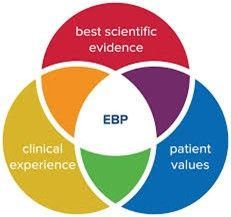The GIGO Effect
The amount of behavioral health agencies turning to electronic health records (EHR's) increases each day. While some agencies are required to have EHR’s as part of their contractual obligation with a county or state, others find it an efficient way to handle their documentation. This is true even with small residential facilities (QTRP’s or STRTP’s) that want to move beyond paper charts and have centralized record keeping.
Some agencies think that having an EHR will improve their treatment outcomes, develop better documentation, or improve treatment efficiency. They are sadly mistaken.
No matter what the reason behind the EHR expansion, the GIGO effect can still exist within the agency. The GIGO effect is an abbreviation for the term “Garbage In, Garbage Out”. This is not in any way meant to denigrate the assessments, treatment plans, or progress notes that the staff writes. It is more of an observation I have from over 40 years reading thousands of notes, charts, and the chore of explaining improper documentation to a regulatory surveyor.
An EHR is only a repository of information. Once the information is put into a record, the EHR cannot clean it up nor change it. For instance, a staff member writes a progress note that does not reflect the service provided to a client. That note, once completed, is submitted for approval to their clinical supervisor or a Head of Service. Then the reviewer has to take the time to read the note, review the chart, and see if the note fits the service provided. If a client’s goal is to improve social skills, and the note talks about going to a Starbucks for a Frappuccino, the note does not meet the threshold of indicating the medical necessity or the reason for the service. The note increases staff time to correct, poses a threat for financial recoupment, and doesn’t advance the client’s functioning.
What causes the GIGO effect? Several reasons exist. One, staff are in such a hurry to finish a note they don’t think through the necessary ingredients to put into it. Second, they may lack the skills or training on how to write it. Third, writing a note on paper and pencil is a very different skill than writing it on a computer. Although more staff are computer efficient nowadays, writing a note takes a specific skill set that many clinicians don’t get through school or in supervision. Finally, our WFA (Work From Anywhere) environment impacts the note. The days of going down the hallway to talk to your supervisor about how to write a note are gone. The staff is on their own.
Ask clinical supervisors how much time they spend reviewing notes. Then ask how much time they spend either parsing words to figure out if the note is “good enough” to approve or needs to be sent back. Suppose you are a large agency, and your supervisor has 10 staff under them. Each staff writes five notes a day. That means the supervisor has to approve 50 notes a day and give them each a lot of time to discern the medical necessity. Because of the volume, it’s no wonder that GIGO’s go through the system and end up as audit red flags from counties.
How to solve the GIGO effect? Agencies need to find ways to help staff manage time, spend energy on educating staff in the art of documentation. They also need to examine their EHR system to see if it is intuitive enough to help the staff navigate through it so note writing is not a time-consuming exercise.
Praxes' treatment software, Apogee, works as a complement to the EHR by generating customized skills and interventions. For more information, please contact us.




